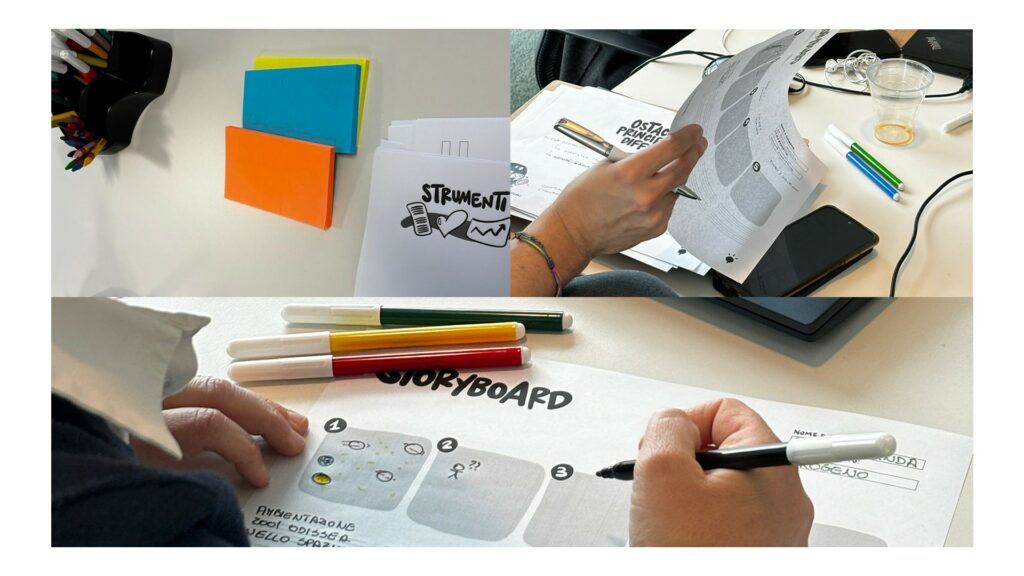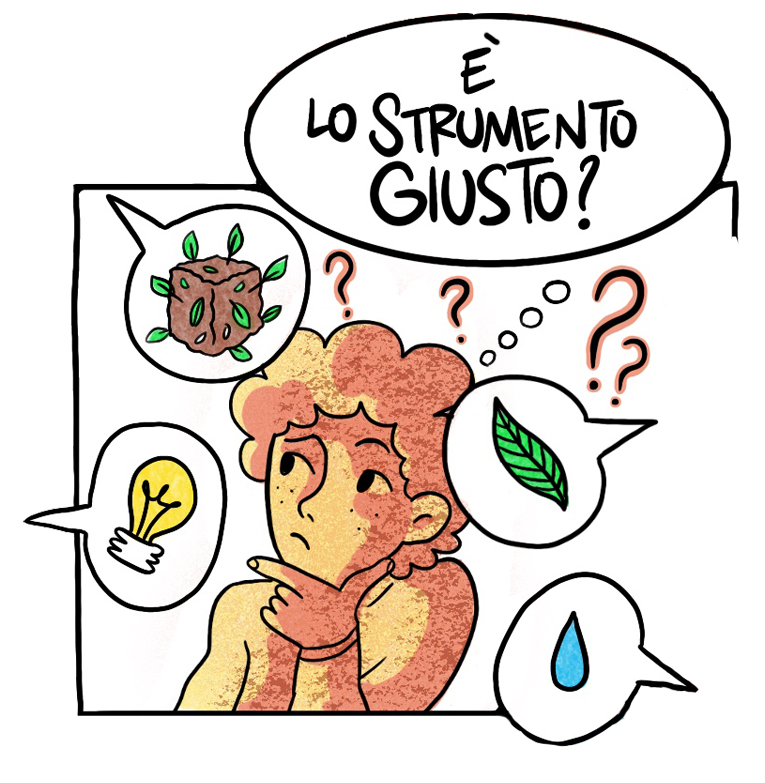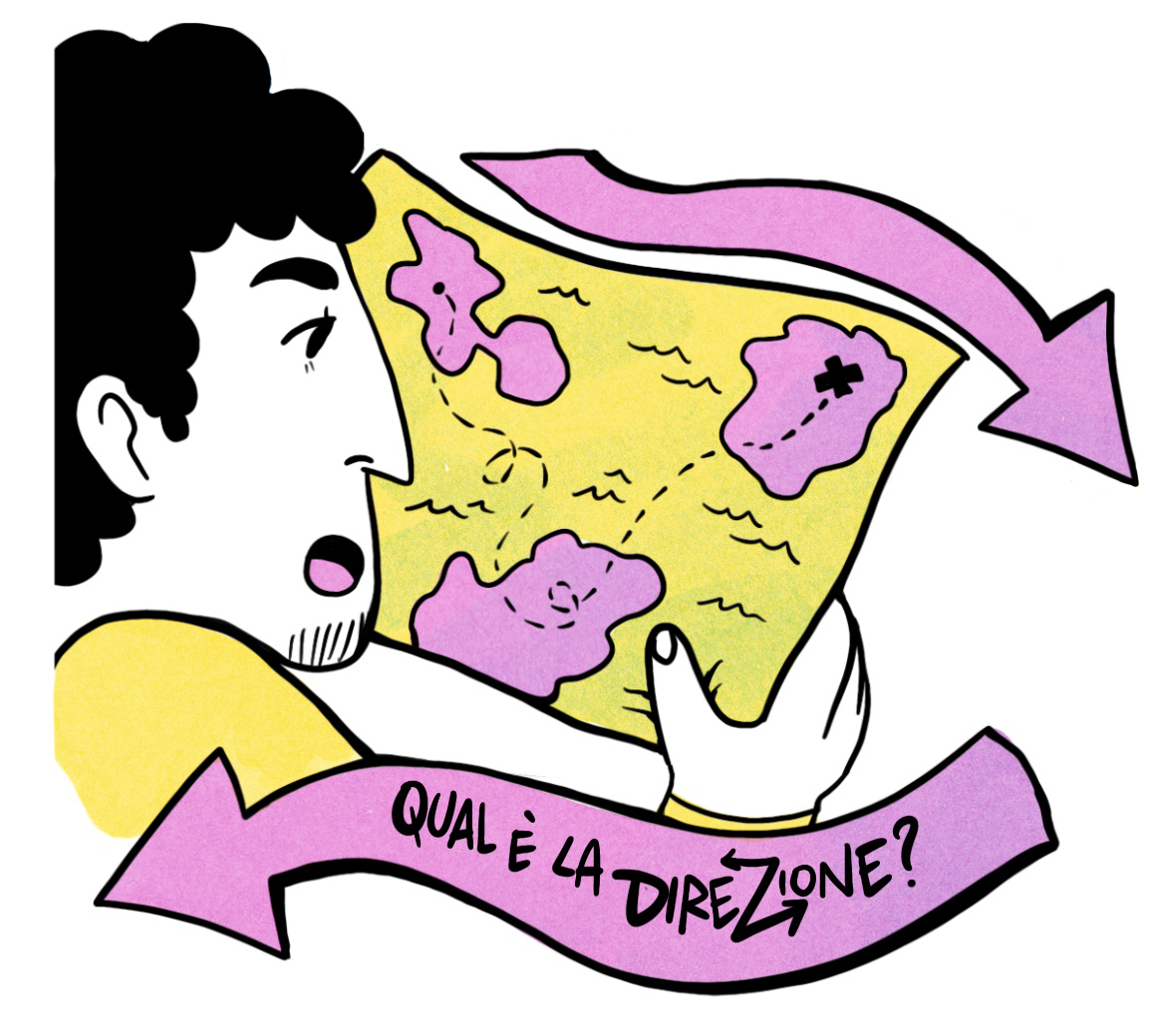Visual thinking vs. visual comics: when scribing and comics collide

Over the past month we have been working on a top-secret project, that has challenged us to create a product we never imagined we would get to create: the comic book.
Writing is a very powerful medium, but the same thing could be said of drawing. Both art forms are carriers of meaning on their own – just think of the expressive power of a silent comic strip – and in their combination. When these two arts collaborate, signification is at its highest.
Comics are the tool that communication, as well as design and other media, are choosing more and more to express complex concepts in a memorable and, at the same time, simplified way.
But how can visual thinking – a mindset, a cognitive and mental approach – be combined with a structured and mobile representation such as that of a comic?

There is a very subtle difference between scribing and comics; indeed, externally, scribing might look very close to a comic book product (a nice drawing, after all). The gap between scribing and comics is very close to the one that passes between comics and illustrations: the former are a meaningful narrative, the latter a static signification.
But an obvious point could be made: if scribing reproduces an instantaneous image of an unrepeatable experience, a comic book involves a back-office phase before its actual realization, which leaves room for care in composition and aesthetics.
The process of creating a comic strip is a hybrid process, involving various intelligences, which also come into play in its reading. As long as various forms of language inhabit it and it can contain metaphorical meanings, there is no limit to its contexts of application. This definition, however, is also shared by scribing.
A comic has in it all the visual elements that are also characteristic of scribing. For our latest work, we made “comic visualizations” (a definition more than appropriately coined by Monica and Chiara). It means, forms of comics that present an extra layer of meaning, functional to put on paper concepts shared by a group.
Metaphor is, in fact, the highest and most expressive tool used by visual thinking, which then transforms it into an image. But while the simple illustration is static and excluded from a narrative – commenting, instead – when it is embedded in a larger picture its meaning also expands.

In this larger scenario, the hierarchy of elements and, especially, of vignettes, which in classical comics have a linear pattern, also becomes important. In “comic visualizations” they can take on a hierarchical dimension, depending on the concept to be emphasized.
Thus, arrows and indicators are used to best denote logical processes. In traditional comics, signs of expression and movement appear, but they do not bend to the flow of thought, rather to the flow of narrative.

Therefore, what makes a visualization part of an actual comic strip is the “vignette,” or rather, the enclosure, the frame that cages visual thought in definite narrative stream with meaning.
And what about design? There is also an aesthetic dimension to this illustrated realization. It is not only visual thinking, but also visual design; the layout, however, is not what one would expect.
Aesthetic texts are not all artistic texts: even advertising and propaganda writings are aesthetic in their own terms and exploit the tuning mechanisms they set in motion for their own purposes.
The storytelling of our narratives is not only aimed at telling a story, but has a different, celebratory purpose: to tell an internal story that can also be understood and shared by external parties, to the extent that comics speak to the universal through the common forms of metaphor and signification.
This makes our achievements understandable even to those who are not interested in comics, but still want to read an experience through images.
For example, we all follow a written narrative in the same way, from right to left. But the elements of visualization, such as arrows and movement markers, will be able to accompany thinking toward certain logical processes, understandable by anyone, even those who are unaware of the additional layers of knowledge behind them.
However, the balloons may overlap and the vignettes follow a hierarchical order dictated by meaning (and here comic book’s purists may cringe).
The application context of our comics is also less general and more specific: they are addressed to a narrow and homogeneous audience.
Communication is a tumultuous environment in which languages live by clashing, reconnecting and sometimes bursting, giving birth to new forms of expression. Comics are like a large ecosystem in which different codes inhabit and live. In this vast jungle, various needs and backgrounds intersect. Borders expand and break (Crash! Stomp!), but our compass of orientation always remains the mind.
Visual thinking is not a product, but a mental approach that triggers concrete change processes. When our comics will take a paper form and become a symbol of a communitarian reality, then they will be no different from a knowledge wall or scribing.
They will be loaded with an additional meaningful level, and if a product speaks and expresses an extemporaneous synthesis of an experience or of a project, in which a group recognizes itself and perceives itself as such, the medium does not matter, but our goal can be considered achieved in any case.
If you want to know more:
D. Barbieri, I linguaggi del fumetto, Milano, Bompiani, 1991.
ID. (2017), Semiotica del fumetto, Milano, Bompiani.
V. Beccia, S. Pastore, (2017), Comics and reading literacy: for a teaching practice of the sequential art, «Form@re – Open Journal per la formazione in rete», 17(2), pp. 130–149.
Bissolotti A. (2018), Fumetto e design della comunicazione. Esplorazione di casi studio e sperimentazioni sul tema della postverità, [Tesi in Design della Comunicazione]. Politecnico di Milano, Scuola del Design.
B. Jacovitti, Jacovitti di qua & di là. Le panoramiche, Viterbo, Stampa Alternativa, 2012.
M. Kish, Moby-Dick in pictures. One drawing for every page, Portland, Tin House Books, 2011.